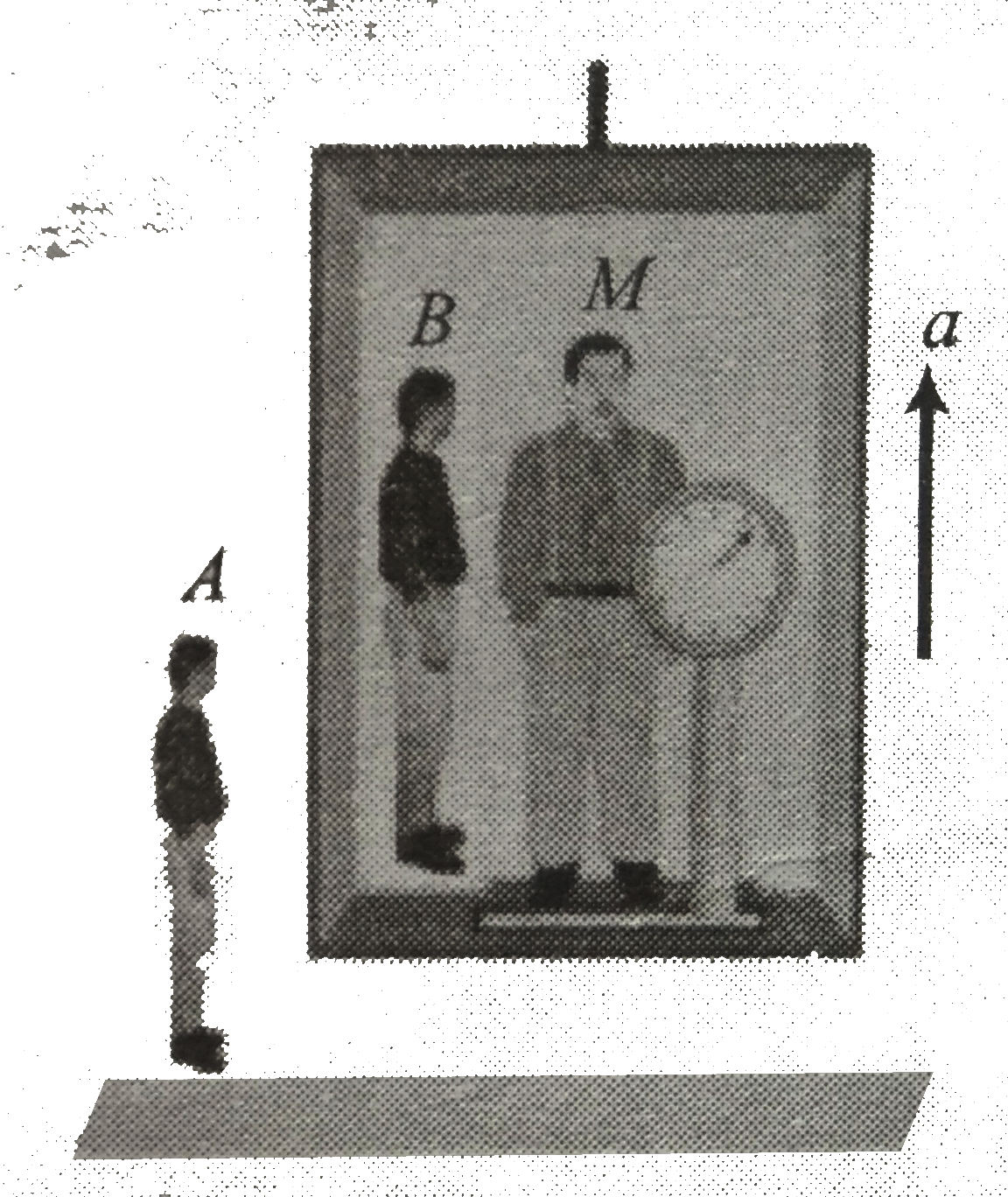Consider an elevator moving downwards with an acceleration a, the force exerted by a passenger of mass m on the floor of the elevator is :
ma
ma-mg
mg-ma
mg∣ma
The correct Answer is:3
To solve the problem of finding the force exerted by a passenger of mass m on the floor of an elevator that is moving downwards with an acceleration a, we can follow these steps:
1. Identify the Forces Acting on the Passenger:
- The weight of the passenger acting downwards, which is given by mg (where g is the acceleration due to gravity).
- The normal force N acting upwards from the floor of the elevator.
2. Draw the Free Body Diagram:
- Represent the passenger and indicate the forces: mg acting downwards and N acting upwards.
3. Set Up the Equation of Motion:
- Since the elevator is accelerating downwards with an acceleration a, we can apply Newton's second law.
- The net force acting on the passenger can be expressed as:
Fnet=mg−N
- According to Newton's second law, this net force is also equal to the mass times the acceleration of the passenger:
Fnet=ma
4. Combine the Equations:
- Setting the two expressions for net force equal gives:
mg−N=ma
5. Solve for the Normal Force N:
- Rearranging the equation to isolate N:
N=mg−ma
6. Interpret the Result:
- The normal force N represents the force exerted by the passenger on the floor of the elevator. Thus, the force exerted by the passenger on the elevator is:
N=m(g−a)
Final Answer:
The force exerted by a passenger of mass m on the floor of the elevator is:
N=m(g−a)
- The weight of the passenger acting downwards, which is given by mg (where g is the acceleration due to gravity).
- The normal force N acting upwards from the floor of the elevator.
- Represent the passenger and indicate the forces: mg acting downwards and N acting upwards.
- Since the elevator is accelerating downwards with an acceleration a, we can apply Newton's second law.
- The net force acting on the passenger can be expressed as:
Fnet=mg−N
- According to Newton's second law, this net force is also equal to the mass times the acceleration of the passenger:
Fnet=ma
- Setting the two expressions for net force equal gives:
mg−N=ma
- Rearranging the equation to isolate N:
N=mg−ma
- The normal force N represents the force exerted by the passenger on the floor of the elevator. Thus, the force exerted by the passenger on the elevator is:
N=m(g−a)
The force exerted by a passenger of mass m on the floor of the elevator is:
N=m(g−a)
Topper's Solved these Questions
- LAWS OF MOTION BOOK - VMC MODULES ENGLISHCHAPTER - LAWS OF MOTION EXERCISE - ENABLE
50 Videos
- LAWS OF MOTION BOOK - VMC MODULES ENGLISHCHAPTER - LAWS OF MOTION EXERCISE - EFFICIENT
50 Videos
- KINEMATICS OF A PARTICLE BOOK - VMC MODULES ENGLISHCHAPTER - KINEMATICS OF A PARTICLE EXERCISE - JEE Advanced (archive)
14 Videos
- LIQUIDSBOOK - VMC MODULES ENGLISHCHAPTER - LIQUIDSEXERCISE - JEE ADVANCED (LEVEL -2)
55 Videos
Similar Questions
An elevator is moving vertically up with a acceleration a the force exerted on the floor by a passenger of mass m is
View SolutionA man of mass m is standing in an elevator moving downward with an acceleration g4. The force exerted by the bottom surface of the elevator on the man will be
View SolutionA man of mass 50 kg is standing in an elevator. If elevator is moving up with an acceleration g3 then work done by normal reaction of elevator floor on man when elevator moves by a distance 12 m is (g=10m/s2):-
View SolutionA man of mass 50 kg is standing in an elevator. If elevator is moving up with an acceleration g3 then work done by normal reaction of elevator floor on man when elevator moves by a distance 12 m is (g=10m/s2):-
View SolutionA lift is moving downwards with an acceleration equal to g. A block of mass m , kept on the floor of the lift of friction coefficient μ , is pulled horizontally . The friction acting on the block is
View SolutionA man (mass =50 kg) is in an elevtor with is moving with acceleration 0.49m/s2 upwards. Find normal reaction exerted by man on floor of the elevator.
View SolutionYou are designing an elevator for a hospital. The force exerted on a passenger by the floor of the elevator is not to exceed 1.60 times the passenger's weight. The elevator accelerates upwards with constant accelerates upwards with constant acceleration for a distance of 3.0 m and then starts to slow down. What is the maximum speed (in ms−1) of the elevator?
View SolutionYou are designing an elevator for a hospital. The force exerted on a passenger by the floor of the elevator is not to exceed 1.60 times the passenger's weight. The elevator accelerates upwards with constant accelerates upwards with constant acceleration for a distance of 3.0 m and then starts to slow down. What is the maximum speed (in ms−1) of the elevator?
View SolutionA man weighing 60 kg is in a lift moving down with an acceleration of 1.8 ms−2. The force exerted by the floor on him is
View SolutionA man of mass M stands on a weighing machine in an elevator accelerating upwards with an acceleration a. Draw the free-body diagram of the man as observed by the observer A (stationary on the ground) and observer B (stationary on the elevator). Also, calculate the reading of the weighing machine.

View Solution
